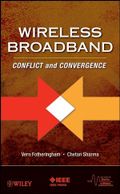This year at the Mobile World Congress, Nokia and Skype announced a cooperation that would bring Skype functionality to the Nokia N97. At the time I took notice of it but thought, well, I've already got instant messaging clients on my Nokia phone including presence and the partnership between Skype and network operator 3 has also brought Skype voice communication, or at least a special flavour of it, to mobile phones. So why the fuzz?
Well, I think it could be the deep integration of it all. According to the press release, Skype will not only be a third party program on the side but it will be integrated with other applications on the phone, especially the phonebook. According to the press release, Skype functionality such as presence and instant messaging will be embedded into the phonebook. Further I assume that since the press release mentions that Skype voice calls will be enabled over 3G and Wi-Fi, 'real' Skype Voice over IP calls (rather than the circuit switched approach used with '3') can be made directly from the phonebook as well.
It may sound trivial but I think such an integration would be very compelling to users. I and some other people I know have been using the built in SIP stack of (most) Nseries devices for some time now and very much value the deep integration into the overall functionality. SIP VoIP calls can be made from the phonebook or directly by typing in the phone number and selecting "Internet Call" instead of just pressing the green button. The phones can even be configured to always use SIP and only fall back to cellular when the selected network for SIP is not available. Very powerful as the SIP stack automatically activates itself once the phone detects the network(s) that have been configured for VoIP use (e.g. the Wi-Fi network at home). Hopefully, we will find the same deep integration of Skype with all its features. That would really distinguish it from current third party solutions which are always a bit on the side and require "specialized handling" that only few normobs (normal mobile users) would put up with. If all this happens, well, we'll see.
Also very important: Skype already has a critical mass, i.e. millions of users out there that already use it on a PC. An invaluable asset that is absolutely necessary to start such a service. Another things that speaks for Skype vs. other solutions (such as SIP) is the easy configuration: Only the username and password is required, plus maybe a selection of the networks over which you would like to use it. That's it. Compared to that, manually configuring the SIP stack is a black art.
Some Mobile operators have let it known that they are not very happy to see this happening. They argue that it will bite into their current business model and future opportunities. So, the first response was often that they would block it. But I think that would merely delay the process, if at all. I would be surprised if Apple, Google and others aren't already working on similar things. Also, I think some operators will make no attempt of blocking it, so people who would like to use the functionality would go there. But why block it? If people want to use it over the cellular network, they need a data subscription, which earns the operator money as well. So I am not convinced they wouldn't benefit from this as well.
Another approach for mobile operators could of course be to offer similar functionality. Not so simple, but not impossible, especially in combination with "connected home networking". More on that in a follow up post.

